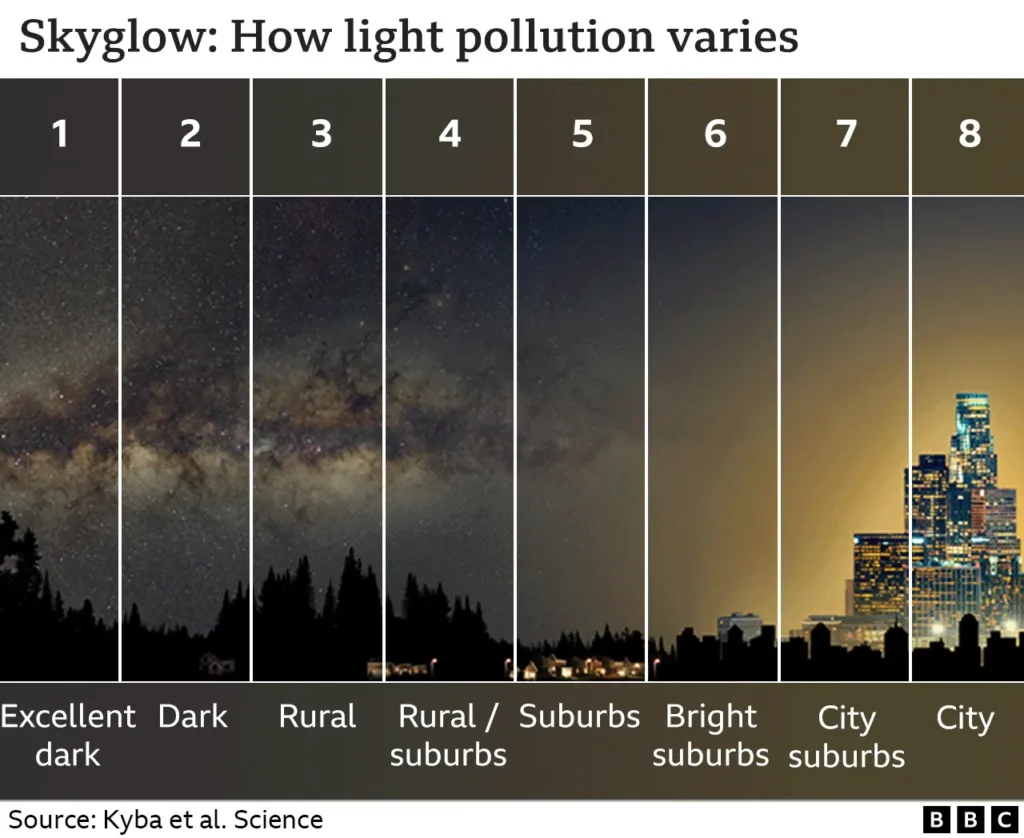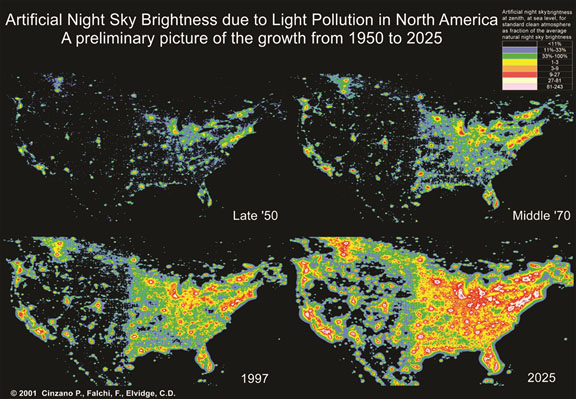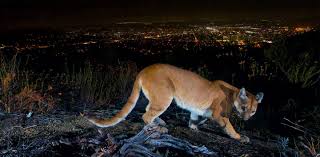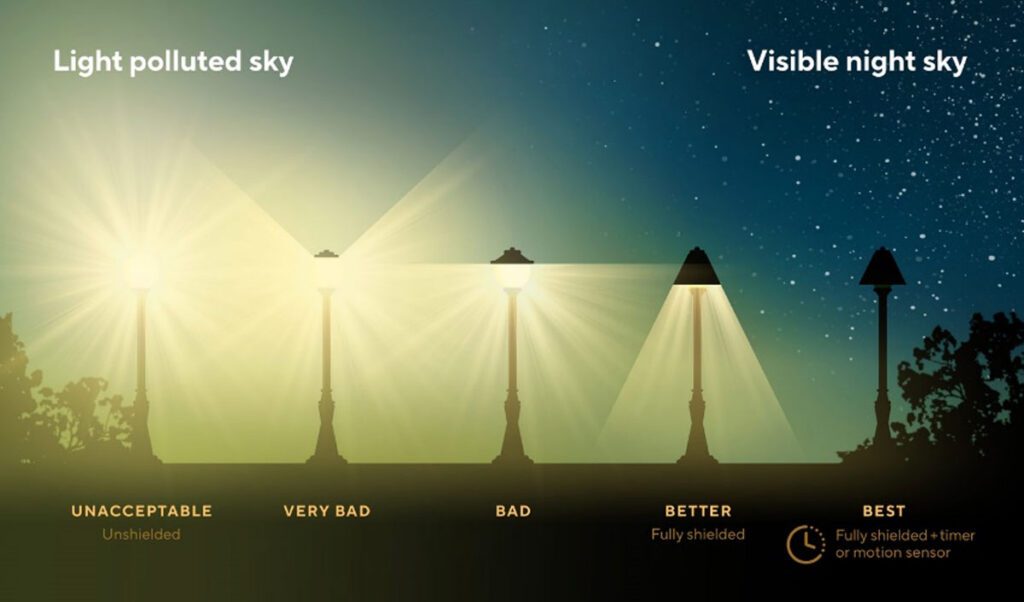The Effects of Light Pollution
When I was a kid, my family and I would go out on the dock at our cabin to watch the meteor showers in August. The whole time we were outside I was so upset that I couldn’t see any shooting stars, so my mom pointed one out to me. I was shocked and told my family, “I thought those were glowing bats!”
Unfortunately, with light pollution progressing further, future generations may not be able to have this type of experience. While I haven’t personally conducted any research on the topic, I have learned a lot from other people’s studies, articles, and journals written by scientists and specialists in light pollution.
Light pollution is a problem that affects mainly major cities but is encroaching on more isolated communities. Many people don’t take it seriously enough, but there are a few simple things you can do tonight to start reducing light pollution. I will talk about the causes and effects of light pollution, and what the government can do, and what you can do to help reduce the effects of light pollution.

So, what is light pollution? In an article by IUNC, the international union for conservation of nature, light pollution is the presence of unwanted, inappropriate, or excessive artificial lighting.
This is caused by human-made alterations of outdoor light levels from those occurring naturally. This can include anything from porch lights, billboard lighting, or even lit store signs.
An article by the National Parks Service says that the primary cause of light pollution are lights that point upwards or sideways. Any light that escapes upwards will contribute to light pollution. Ineffective lighting can also decrease visibility by creating a high level of glare. Believe it or not, air pollution can also have an effect on light pollution. When air pollution is high, visibility is reduced because of light diffusion, the light also scatters at night, and as a result, increases light pollution. A study done by three astronomers and scientists show that even the color and wattage of a light can influence the amount of light pollution.
They also found that the US population is growing at an average rate of less than 1.5% per year, while the amount of artificial light is increasing at an annual rate of 6%. Light at service stations can be brighter than what is recommended for an indoor office, and parking lots are often illuminated 5-10 times more than they were 20 years ago. While it is rarely the purpose to light up the sky, it is the unfortunate consequence of inefficient and poorly designed lights.

So, we know what light pollution is now, but what are the effects of it? The most obvious effect of light pollution is the night sky not being fully dark, and not being able to see the stars most nights, but what does this really mean for us and the environment?
One of the less commonly thought of consequences of light pollution is energy waste. This part is a bit full of numbers, but I believe it is important information more people need to know. In 2017, the energy information administration reported 32% of energy use was outdoor lighting, and 30% of that outdoor lighting was estimated to be wasted. This costs $6 billion dollars in a year. While this is a ton of money to be wasted, this amount of light also releases a lot of CO2 into the atmosphere. The estimated amount of CO2 emitted from wasted outdoor lighting was a total of over 11 million tons. All this wasted energy could have been saved if outdoor light were either turned off or made more efficient.
From birds to frogs and insects, artificial light can be extremely damaging to wildlife. Many animals rely on natural light to determine when to sleep, where to migrate, and even to cue their reproductive systems. An article by researchers at Dark Sky talks about many of the animals that are affected. I am sure many of you have seen how moths and other insects flock to porch lights and streetlights. While on the surface it is a bit gross to see so many bugs, it isn’t natural for them to hang around lights in such concentrated areas, which leads to predators having easy access to plenty of bugs, resulting in declining insect populations.
Many breeds of birds rely on migration for the species to thrive, but with so many large cities illuminated more than necessary, birds can be thrown off course leading to them being unable to make it to their destination in time, missing ideal climates for nesting, foraging and reproduction.

Lastly, many predator species hunt at night, using darkness to help hide their approach on prey. Now, with the skies being brighter than ever, predators are having trouble catching prey.
Of course there are many other animals that are affected, but this post would be far too long if I kept going.
It might seem like there is nothing we can do, but there are actually quite a few simple ways we as normal people can reduce light pollution.
The easiest and quickest thing you can do is not leave on outdoor lights overnight. A common thought most people have is that having outdoor lights will help reduce crime. There is conflicting information on whether outdoor lighting deters burglars. Some of the information I saw said it did, some said it didn’t, and one even said that the glare from improper lights can obscure intruders. One way or another, there are ways to reduce light while still being mindful that it may have positive effects on reducing crime. One solution is to purchase a motion activated light.
There are a wide variety of motion activated lights ranging from $20 to $60. Another option is to search for Dark Sky certified light fixtures. These are lights that have a warmer hue and are shielded from pointing directly up. These are slightly more costly but still an option to look into.
I’m sure you have all noticed how bright some billboard lighting is, or how some streetlights seem to point directly at the sky.
These solutions are in the hands of state and city officials, but if enough people bring up the issue hopefully more politicians will notice and take action.
One suggestion I have would be to put regulations in place to both reduce the brightness and the direction of the lights on billboards. There isn’t really any information on how much it would cost for companies to switch their lighting to more efficient and less polluting, so I can’t really talk much on that point.
Another switch would be from unshielded and ineffective street lighting to shielded and efficient lighting. There are two steps for reducing light pollution from street lights from a designer’s perspective. In an article by an architect, the first step is warmer bulbs. These use the same amount of energy as blue lights, are at a similar price point, and scatter light less. It is also possible to dim outdoor lights by 25% without losing any visibility.
The second step would be to switch lights to be pointing downwards and/or having a shield preventing light escaping above the horizontal. There are hundreds of models of lights that reduce light pollution and with a city-wide effort to replace many streetlights, overhead glow would be significantly reduced.

Obviously of these couple of solutions, you can really only directly affect two of them. However, with more people talking about an issue, the more likely it is to be noticed by city and government officials. So, turn off your porch lights, and tell others about this growing issue.
More than 80% of the world’s population lives in light pollution. It may feel hopeless but there are ways to help!
By turning off our lights and encouraging city officials to take action, we can directly have an impact on the lives of millions of animals, reduce energy waste, and improve our own view of the night sky. Turn off your lights, consider a motion activated porch light, and tell your friends and family about what they can do to also reduce their light pollution footprint


